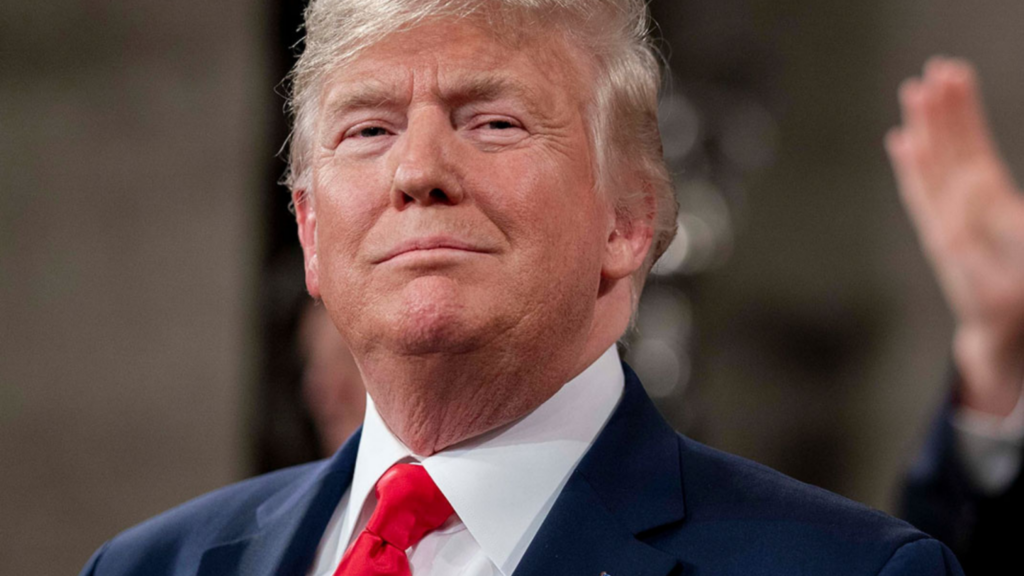The Strategic Direction of US Foreign Policy Under the Current Administration
As the current US administration nears its second year, its evolving foreign policy has prompted a global reassessment of American reliability. This report examines the strategic direction of US diplomacy and how it has been recalibrated in response to shifting global dynamics and domestic political pressures.
Allies across regions, from the Gulf to the Indo-Pacific, are asking whether the US remains a strategic anchor or is increasingly pursuing conditional engagement. For many, especially outside NATO, the concern is not American withdrawal but the transactional nature of its support, with foreign policy now serving as a tool of strategic leverage. This shift, under President Trump, a real estate magnate whose worldview is shaped less by traditional diplomacy and more by the logic of deal-making, echoes the ethos of The Art of the Deal, where leverage, conditionality, and performance underpin negotiation.
This is not a turn toward isolationism, but a recalibration. While the US retains formidable assets, global alliances, military reach, and technological supremacy, their deployment is increasingly shaped by domestic conditions. This moment invites a more multipolar security environment, where partnerships must navigate a renewed American preference for unilateral action.
Institutions vs Elections: The Tightrope of Continuity
For decades, American foreign policy has rested on institutional continuity, characterised by sprawling bureaucracies, binding treaty frameworks, global military footprints and predicable defence budget increases. NATO force structures, Indo-Pacific patrols, and Five Eyes intelligence channels cannot simply be switched off with a change of president (Ikenberry, 2011). The Pentagon upholds deterrence posture in Europe and Asia, the State Department maintains a global diplomatic presence, and economic ties sustain US engagement.
Electoral mandates create pressure points, as rhetoric on ‘burden-sharing,’ threats to reduce aid, and critiques of ‘endless wars’ signal to allies that long-standing institutional commitments may be subject to ideological reinterpretation (Blankenship, 2023). As a result, the credibility of American guarantees, which was once assumed, now require reassurance.
The Transactional Turn: Alliances Under Negotiation

The greatest disruption lies not in military retreat, but diplomatic reconfiguration. The US spends more on defence ($895 billion) than the next top nine nations combined ($835 billion) (Defence Budget by Country, 2025), yet the question remains about the use of this military dominance. Trump II has continued to emphasise performance-based alliances, where economic and military support is increasingly tied to strategic alignment. Mr Trump has threatened to impose punitive tariffs on Spain for refusing to meet NATO’s new defence spending target of 5% of GDP, calling the decision “unbelievably disrespectful” (POLITICO, 2025.) This approach does not abandon alliances, rather monetising them, with American support increasingly becoming contingent, not guaranteed.
Ukraine, Taiwan, and Conditional Deterrence
US support for Ukraine and Taiwan increasingly reflects this model of conditional deterrence. Support to Ukraine has already become partisan issue, (unlike elsewhere in Europe) with then senator JD Vance (now Vice President) vowing in April 2024 that “if Ukraine thinks that it’s getting another $60 billion supplemental out of the United States Congress, there’s no way,” (The Hill, 2024). This shift was formalised through the Prioritised Ukraine Requirements List (PURL) initiative, launched in July 2025, which enables European allies to purchase US weapons for transfer to Ukraine. The last direct US military aid was issued on December 30, 2024, marking the transition in Washington’s approach to burden-sharing and military assistance. This approach underscores the evolving model of conditional support in US attitudes, which is reshaping transatlantic security dynamics.
China, Tariffs and Economic Statecraft

The distinction between continuity and disruption paths in foreign economic policy is particularly evident in the administrations approaches to China. A continuity path reflects a stable, institutionalised strategy aligned with liberal internationalism, favouring coordinated export controls with allies; exemplified by US-EU-Japan cooperation on restricting China’s access to advanced technologies like semiconductors (Allen and Goldston, 2025). In contrast, a disruption path embodies a more nationalist and populist orientation, marked by unilateral tariffs and a more confrontational rhetoric. The Trump administration’s imposition of tariffs on steel and aluminium, applied globally, combined with its preference for bilateral agreements like United States–Mexico–Canada Agreement (USMCA) over multilateral frameworks illustrate this approach (Meltzer and Ezi-Ashi, 2025). These conflicting strategies align with the models outlined by Blanchard and Ripsman, who emphasise the tension between multilateral cooperation and sovereign leverage in economic statecraft (Blanchard and Ripsman, 2013). This tension is not merely theoretical, rather it shapes the strategic choices states make in navigating global power shifts, especially as China’s rise forces a recalibration of economic tools, alliances, and prior commitments in foreign policy.
Conclusion: Leadership or Leverage?
The current administration’s foreign policy does not hinge on electoral outcomes but on strategic shits. As global dynamics shift, the United States is redefining its role, not as a passive guarantor of the international status quo, but as an active broker of conditional influence. The architecture of American power remains intact: alliances, military bases, financial leverage, and technological innovation. Yet the psychology of American leadership is evolving. For global policymakers, this presents a pivotal question: will the US continue to preserve influence through stability, or repurpose it as leverage in a more transactional world? Continuity offers reassurance, but disruption increasingly defines engagement. The world is no longer choosing between them – it is preparing for both.
References:
Allen, G.C. and Goldston, I., 2025. Understanding US Allies’ Current Legal Authority to Implement AI and Semiconductor Export Controls. Centre for Strategic and International Studies (CSIS). Available at: https://www.csis.org/analysis/understanding-us-allies-current-legal-authority-implement-ai-and-semiconductor-export [csis.org]
Blankenship, B.D., 2023. The Burden-Sharing Dilemma: Coercive Diplomacy in US Alliance Politics. Ithaca, NY: Cornell University Press. [academic.oup.com]
Blanchard, J.-M.F. and Ripsman, N.M., 2013. Economic statecraft and foreign policy: sanctions, incentives, and target state calculations. London: Routledge. Available at: https://doi.org/10.4324/9780203098172
Defence Budget by Country, 2025. Global Firepower. Available at: https://www.globalfirepower.com/defense-spending-budget.php [globalfirepower.com]
Ikenberry, G.J., 2011. American Foreign Policy: Theoretical Essays. 6th ed. Boston, MA: Wadsworth. [books.google.com]
Meltzer, J.P. and Ezi-Ashi, D., 2025. Tracking Trump’s tariffs and other trade actions. Brookings Institution. Available at: https://www.brookings.edu/articles/tracking-trumps-tariffs-and-other-trade-actions/ [brookings.edu]
POLITICO, 2025. Trump to Spain: Spend more on defence or face ‘punishment’ tariffs. Available at: https://www.politico.eu/article/donald-trump-nato-spain-madrid-defense-spending-europe/ [politico.eu]
The Hill, 2024. GOP critics vow no more US aid for Ukraine. Available at: https://thehill.com/homenews/senate/4619185-gop-critics-vow-no-more-us-aid-for-ukraine/ [thehill.com]




